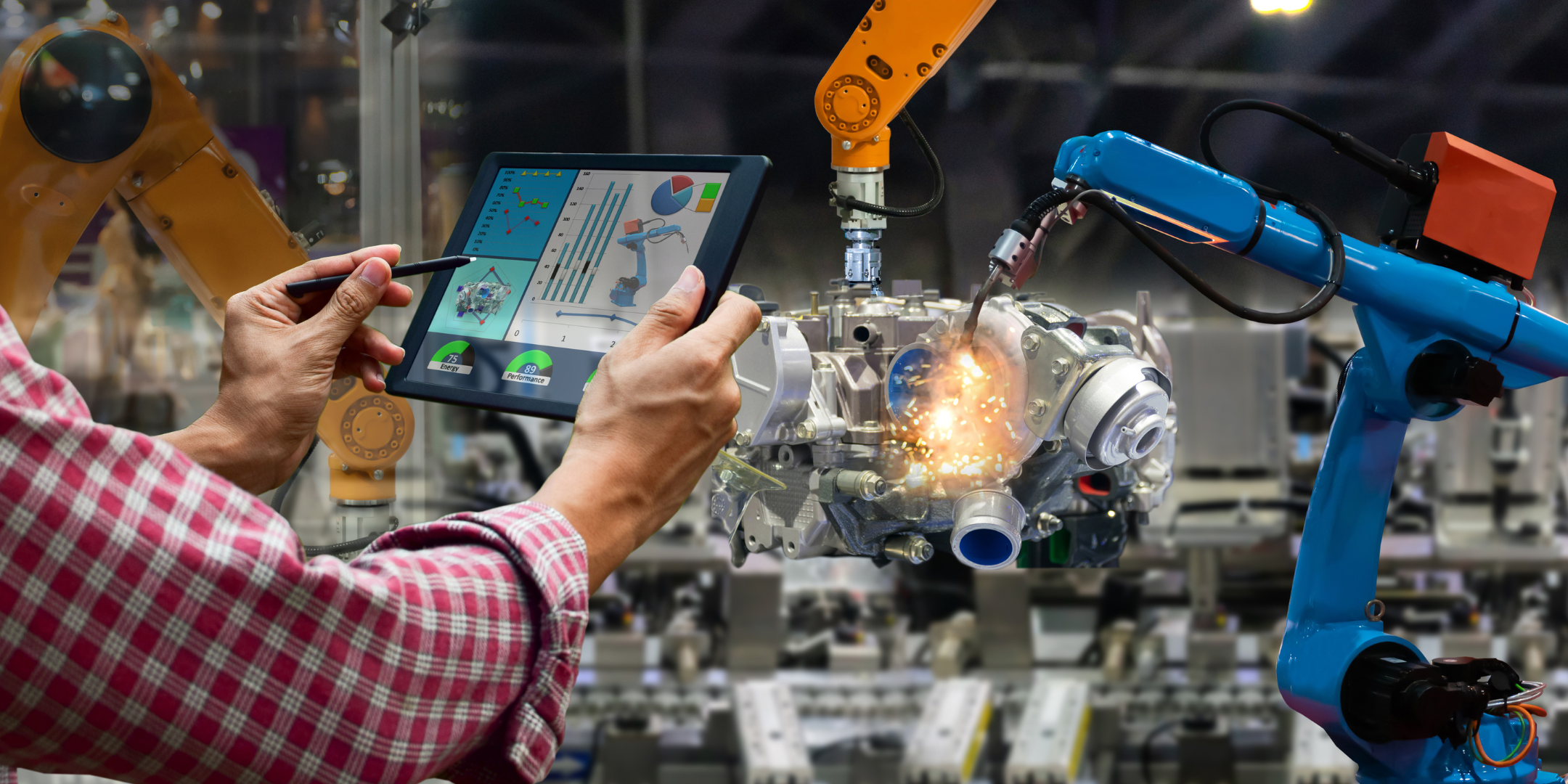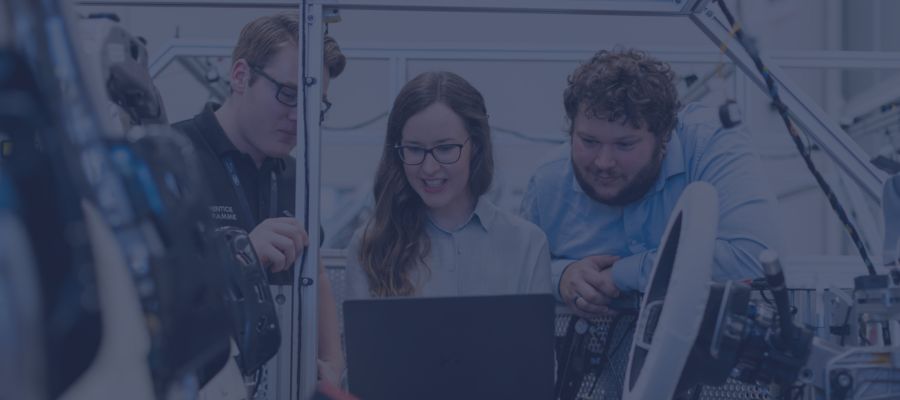The Engineering & Manufacturing Landscape in the UK
Engineering & Manufacturing is at the forefront of groundbreaking technological advancements. From automation and AI to additive manufacturing and IoT, professionals in this sector are pioneering solutions that are shaping the future of industry.
The UK engineering sector employs around 5.7 million people, accounting for 19% of the workforce. It spans multiple disciplines, including civil, mechanical, and electrical engineering. With innovation driving productivity and economic growth, the demand for skilled professionals remains strong across specialisations.
But what are the key technologies shaping the future of Engineering & Manufacturing? Let’s explore.
How Automation & AI Are Revolutionising Efficiency
The Rise of Robotics & Intelligent Systems
One of the most significant transformations in E&M is the integration of automation and artificial intelligence (AI).These technologies are streamlining production processes, reducing human error, and significantly cutting operational costs.
Automation: Robotics and automated machinery handle repetitive tasks, allowing human workers to focus on complex problem-solving and creativity.
AI-Driven Decision Making: Machine learning algorithms analyse vast amounts of data to optimise production schedules, predict maintenance needs, and enhance product design.
Predictive Maintenance: AI-powered systems anticipate equipment failures before they occur, minimising downtime and ensuring higher productivity.
These innovations help manufacturers stay competitive by improving efficiency, reducing waste, and maintaining high-quality outputs.
One of the most significant innovations in the EMT space is the integration of automation and artificial intelligence (AI). Automation technologies are streamlining production processes, reducing human error, and significantly cutting down on operational costs. Robotics and automated machinery are taking over repetitive tasks, allowing human workers to focus on more complex and creative aspects of their jobs.
AI, on the other hand, is transforming how manufacturers approach problem-solving and decision-making. Machine learning algorithms analyse vast amounts of data to optimise production schedules, predict maintenance needs, and even enhance product design. These intelligent systems enable manufacturers to anticipate and respond to issues before they become problems, ensuring smoother operations and higher quality outputs.
Additive Manufacturing: Crafting the Future
3D Printing and Its Industry Impact
Additive manufacturing, or 3D printing, is revolutionising how products are designed and produced. This technology enables the creation of complex and customised components with unprecedented precision and speed.
Key advantages include:
Reduced Material Waste: Traditional manufacturing methods often result in significant material loss, whereas 3D printing minimises waste.
Faster Prototyping: Engineers can rapidly test and refine designs, accelerating the development cycle.
Industry Applications: From lightweight aerospace components to bespoke medical implants, additive manufacturing is driving innovation across multiple sectors.
By embracing this technology, companies can enhance production flexibility and bring new ideas to market faster than ever before.

The Internet of Things (IoT): Connecting the Dots
Smarter Manufacturing Through Real-Time Data
The Internet of Things (IoT) is transforming manufacturing by creating intelligent, interconnected systems that improve efficiency and decision-making.
How IoT is impacting E&M:
Smart Sensors: Monitor equipment health, track inventory, and automate supply chain processes.
Real-Time Data Insights: Engineers and manufacturers can make informed decisions based on live operational data.
Predictive Maintenance: IoT-enabled systems detect issues before they escalate, reducing costly downtime.
By leveraging IoT technology, businesses can create more adaptive, data-driven, and efficient production environments.
5G: Accelerating Innovation in Engineering & Manufacturing
The deployment of 5G networks is another game-changer, enabling faster data transfers, enhanced connectivity, and real-time collaboration across global teams. Key benefits include:
Seamless Remote Operations: Engineers can control machinery and systems from anywhere.
Enhanced Automation: 5G allows for more responsive, AI-powered production processes.
Fewer Geographical Constraints: Companies can collaborate internationally without limitations.
With 5G, the potential for growth, efficiency, and digital transformation in the E&M space is greater than ever.
The Growing Demand for Skilled Talent
The Skills Shortage & Recruitment Challenges
Behind every technological breakthrough are skilled professionals driving progress. However, the E&M sector is experiencing a skills shortage, making it crucial for businesses to attract and retain top talent.
STEM jobs are projected to grow 10.8% between 2022 and 2032, nearly four times faster than non-STEM roles.
Companies must invest in workforce development to stay competitive.
Adaptability & continuous learning are becoming essential skills for professionals in this evolving sector.
With innovation accelerating, businesses need a flexible, skilled, and motivated workforce to embrace and implement new technologies.
Finding the Right Talent: How We Can Help
Connect with Expert Engineering & Manufacturing Recruiters
As Engineering & Manufacturing businesses undergo a seismic shift with new technologies, finding the right talent has never been more important.
Our STEM Recruitment Consultants understand the changing demands of the industry and specialise in sourcing highly skilled professionals for engineering and manufacturing roles. Whether you're looking for experienced specialists or adaptable new talent, we can help.
Take the Next Step
Looking to hire top talent for your Engineering & Manufacturing business? Our specialist recruitment consultants are ready to connect you with the best professionals in the industry.
Book a FREE Consultation today and discover how we can support your recruitment needs.

